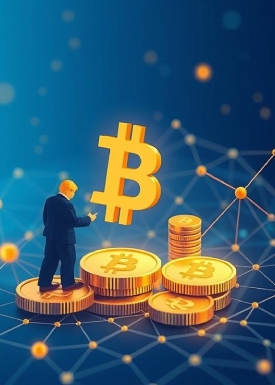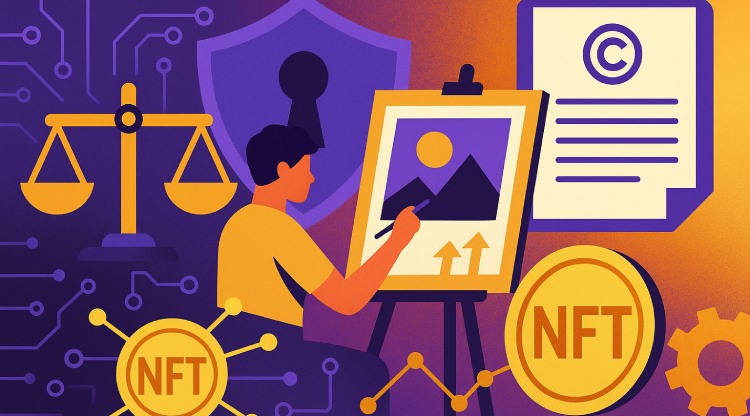
Blockchain started out as the mechanism behind Bitcoin, but it has grown far beyond cryptocurrency. Now, blockchain powers applications in finance, logistics, identity, real estate, and even art. Its core selling point, decentralized replications of tamper-resistant records, makes it useful wherever there is a need for trust, transparency, and data integrity. We are looking at some exciting examples of the use of blockchain that act as a catalyst in various industries.

One of blockchain's most evolved and visible applications is in decentralized finance (DeFi). The idea here is to replace traditional financial intermediaries such as banks and brokers with code-based protocols.
In DeFi, users can lend or borrow digital currencies from each other through smart contracts. Platforms such as Aave and Compound are where the people can put their crypto assets to interest or draw loans on collateral, mostly without undertaking identity or credit checks. This translates to having, almost anytime, an additional financial arena that can be accessed without passing through a centralized institution.
Blockchain also drives tokenization of real-world or digital assets. This includes stablecoins, which are pegged to fiat currencies like the U.S. dollar and provide price stability almost absent in any other cryptocurrencies. Stablecoins such as USDC or DAI are used predominantly in DeFi for payments, remittances, and trading.
Supply chains make for convoluted, global entities in which inefficiencies breed. In particular, the blockchain offers tracking of goods and various materials all through the supply chain, chalking the journey on an immutable ledger: from the steamy source to a steaming cup in one of the thousands of cafes around the world.
Companies such as IBM and Maersk have implemented the blockchain for creating transparency in shipping and logistics. For instance, blockchain technology can trace the journey of coffee beans from the farm to the cafe with end-to-end visibility, providing businesses as well as consumers with greater confidence with respect to sourcing claims like “organic” and “fair trade.”
Blockchain records are nearly impossible to interfere with, so they prove to be useful in proving authenticity. It is especially useful in areas such as pharmaceuticals, high-end products, and electronics, where counterfeiting is one of the highest risks. If every product has a unique digital identity on the blockchain, it becomes easier to verify from where it originated and if it truly exists.
Another field where blockchain can boost security and control is digital identity management. Instead of being stored on centralized servers, personal data is stored on-chain as cryptographically secured digital identities, or rather, the end user stores such identities.
A self-sovereign identity system allows one to manage his or her own credentials, such as a digital passport, without governments or corporations holding such data. It gives people greater privacy and control over who accesses their information. Projects like Sovrin and uPort have been experimenting with such models.
The KYC compliance procedures constitute an annoyance not just for end users but for the financial institutions as well. The blockchain could, however, minimize repeated checks on an identity by enabling a user to share his or her verified identity with more than one service, lowering costs and expediting onboarding.
The usefulness of the blockchain is in creating an environment for recording ownership and effecting a transfer of ownership, which in real estate has always been slow and cumbersome with piles of paperwork.
Properties can be tokenized into shares on the blockchain, enabling people to invest smaller amounts of money into real estate. This also opens up a secondary market wherein shares can be traded round the clock and more liquid real estate markets are created.
In several countries, new and promising land registries based on blockchain technology are being tested. By placing ownership records on-chain, governments hope to reduce disputes, avert land grabbing, and instill confidence in property rights. Thus far, they have been implemented on a pilot basis in Georgia and Sweden.

For a long period, ownership over digital content, music, art, or writing has remained hard to protect. Blockchain eases the proof of ownership and the certainty of creation time.
Non-Fungible Tokens use a blockchain to prove ownership of unique digital assets. Despite being hyped as mechanisms of digital art sales, the real potential lies in helping an artist monetize and enforce royalties upon his or her work. Smart contracts can guarantee payment for artists whenever their work is resold.
Blockchain timestamps can work as proof-of-creation for digital files to aid creators in protecting the intellectual property. This still appears to be an emerging use case but has big promise in, say, publishing and software development.
The potential of the blockchain reaches far beyond cryptocurrency. With all its strengths, such as being secure, transparent, and decentralized, it is applicable to sectors that require accurate records, trustworthy transactions, or complex logistics. Though all applications may not be ready for large-scale deployment, experiments across industries indeed show that blockchain technology is being taken seriously outside of tech circles.